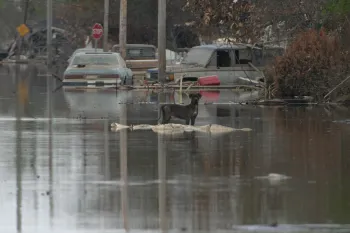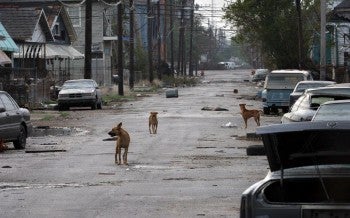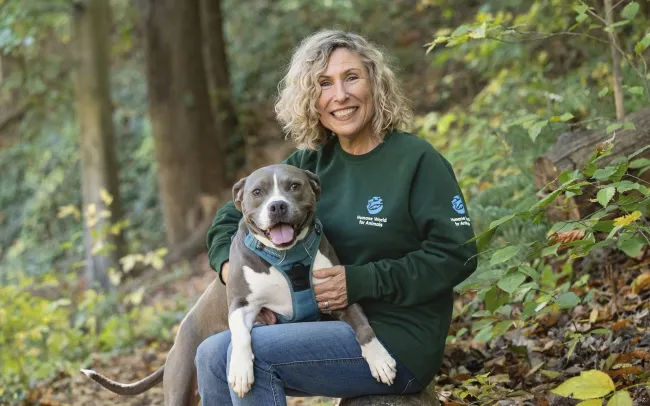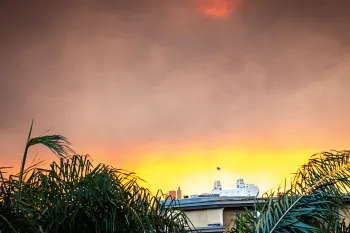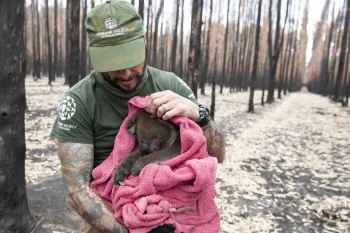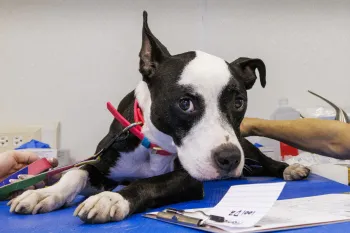The 20th anniversary of Hurricane Katrina has prompted the recirculation of so many disturbing images along with the return of painful memories of the misery and suffering the disaster visited upon the residents of the Gulf Coast states. Distressed and displaced citizens, their homes and lives destroyed, seeking food, drinking water and safe refuge at the Superdome and other sites. More than $100 billion in damages, over 1500 deaths and very little help in sight. How could this have happened?
As the plight of animals came into focus, with thousands of them trapped in homes and stranded in New Orleans and other communities, we moved as quickly as we could to meet the demands of the crisis. One of the things I remember most about Katrina is that it was all hands on deck across our entire organization. It didn’t matter if you were a wildlife scientist, a lobbyist, a graphic designer, an IT specialist, a state director or an accountant. For weeks and in some instance months, you were a responder.
Virtually overnight, as the extent of the disaster became evident, we turned ourselves into a full-scale, round-the-clock animal rescue operation. We sent dozens of staff members—wave after wave—into the field in Louisiana and Mississippi, and reassigned dozens of others at our headquarters to related response work.
My daughter was a toddler then, so I wasn’t able to deploy. Instead, I worked long hours at a center where we took calls from people desperate to tell us about the animals they were forced to leave behind, to let us know where their pets could be found and to plead for our help. Those calls were heartrending.
Two decades have not dimmed my memory of an older man who reached out to us. He had left his dog in the house with food and a bathtub full of water. Like others who were ordered to evacuate New Orleans, he thought he would be permitted to return to save her. But he wasn’t because government officials subsequently restricted access to the area in which his home was located. He was broken, sad, full of guilt and, like countless others subject to a mandatory evacuation order, helpless.
I’ll never forget the elation I felt after hearing that our responders on the ground, who were authorized to carry out rescues in restricted areas, went in and got his dog, and eventually the two were reunited.
We will never know how many animals perished. But we know that because of our efforts, the efforts of an army of skilled and devoted people from local animal shelters, animal rescue groups and other organizations and our donors’ support, we were able to bring thousands of animals to safety at an events center in Gonzales, Louisiana, and other locations in the region. Many were reunited with their families, and many others went out to shelters across the country for placement in new homes. Ultimately, it became one of the largest animal rescue deployments in history.
All too often, it takes a disaster of great magnitude to spur needed change. Long before Katrina, for years and years, we had been making the case for the inclusion of animals in preparedness planning, with only limited success. After Katrina, we had no trouble making the point. There were a lot more people, and a lot more decision-makers, ready to listen and ready to act. The storm and its aftermath had shown dramatically how the fates of people and the animals they love are intertwined.
Twenty years later, this single disaster remains emblematic of government failure, environmental injustice and a fateful lack of appreciation for the centrality of animals in our lives. The forced abandonment of thousands of them in New Orleans and the inability of most disaster response entities to grasp the importance of animal-related preparedness strategies compounded the tragedy.
Still, Katrina was a true catalyst of change. Within two years, we had helped to secure passage of legislation in the U.S. Congress, the PETS (Pets Evacuation and Transportation Standards) Act, which incentivized the inclusion of animals in disaster preparedness planning by linking it to disaster funding. On several occasions, the bill’s primary sponsor, the late Rep. Tom Lantos, stated that the image of a child being separated from his dog outside of the Superdome in New Orleans was the driving factor: "The dog was taken away from this little boy, and to watch his face was a singularly revealing and tragic experience. This legislation was born at that moment."
The PETS Act carries with it an implicit recognition that pets are not just part of our families but a part of society and deserving of civil protection in their own right. However, the PETS Act was not the end of anything. It was the beginning of something. Namely, it kickstarted the drive to embed awareness of animals and concern for their welfare into all facets of disaster planning, at all levels, in both the private and public sector, worldwide. Helping communities to prepare for animals’ needs in disaster is a signature element of our global outreach work today.
The outpouring of generosity from supporters enabled us to help to rebuild the animal protection infrastructure in the Gulf Coast region, providing millions of dollars for construction of new animal shelters and the establishment of shelter medicine programs at two veterinary schools, among other commitments.
Over the decades, we have built one of the strongest disaster response teams in the world, ready to deploy at a moment’s notice to help animals and the people trying to care for and protect them in moments of crisis. We’re witnessing the adoption of more enlightened disaster response and preparedness policies, not just in the United States but worldwide. Today, the whole world knows that animal rescue is a crucial component of effective response, not a sideshow distraction in a disaster scenario.
Without question, Katrina exposed some weaknesses in our field which we’re still trying to address. In its aftermath, we carried out a series of spay and neuter initiatives with local partners, using advanced research concerning public attitudes that helped us to sharpen our approach to increasing access to veterinary care and other pet services in underserved communities. This was the seedbed of today’s access-to-care movement, including our Pets for Life program and our More Than a Pet campaign.
So many years later, the images we associate with Katrina still produce an inevitable sadness. Failing levees and floodwalls. Whole neighborhoods submerged. Markings spray-painted on homes to indicate the presence of animals in need of rescue, and the presence of victims, human and animal. Panicked animals stranded on the streets of so many communities, in the sweltering heat of a Gulf Coast summer. All the tears and heartbreak.
But we did not stand by as the crisis unfolded and neither did our supporters and donors, Together, we stood up for animals, just as we stood up for the people who loved them and were trying to help them. And today, we’re standing by them still, in community after community, in country after country, changing the conversation about animals in distress, changing the approaches taken to their plight and changing the outcomes for more animals and people than we could ever count.
This is the true legacy of Katrina, the one we guard so carefully and the one we keep close to heart.
